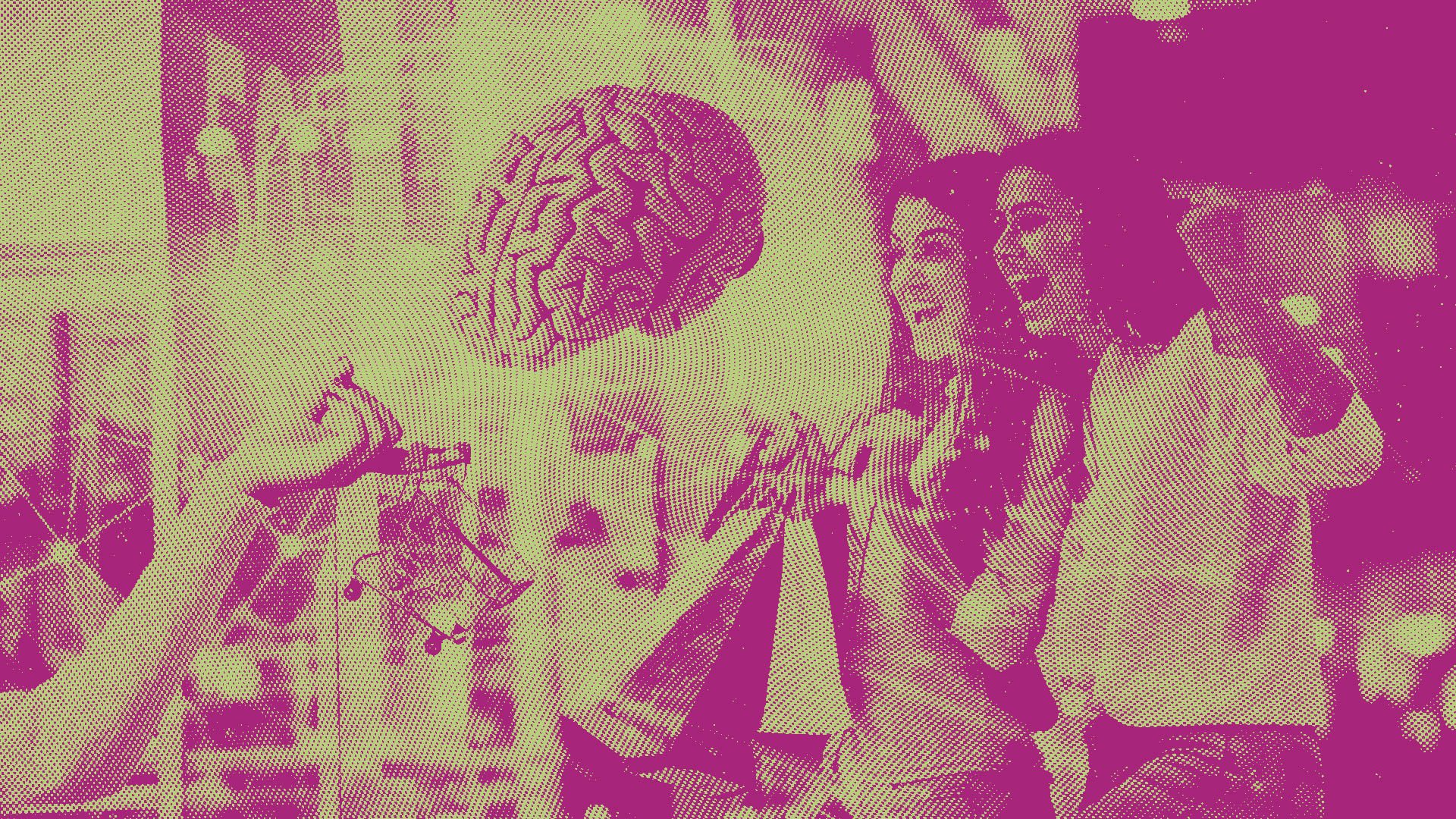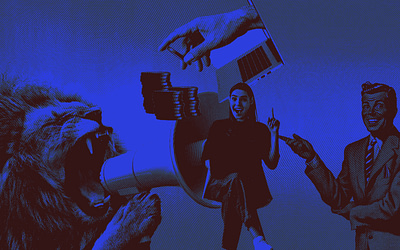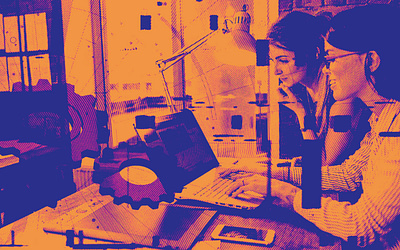Table of contents
Why traditional pricing strategies fail to maximise conversions
Most businesses set prices based on cost-plus models or competitor benchmarks, assuming customers make rational choices. However, consumer behaviour is driven by subconscious triggers rather than logical calculations. Studies in behavioural economics show that pricing perception is influenced by context, framing, and cognitive biases rather than absolute value (Kahneman & Tversky, 1979).
Static pricing approaches overlook the psychological factors shaping purchase decisions. Consumers do not evaluate numbers in isolation; they compare, contrast, and react to relative differences. This is why two products with similar costs can have vastly different conversion rates depending on their presentation. Without applying neuroscientific insights, businesses risk underpricing premium products or losing sales due to poorly structured pricing pages.
How neuroscience and behavioural economics reshape pricing psychology
Neuroscience has revealed that pricing triggers activity in the brain’s pain and reward centres, influencing willingness to pay (Knutson et al., 2007). fMRI studies show that high prices activate the insula, a region associated with discomfort, while well-positioned price points stimulate the nucleus accumbens, linked to pleasure and anticipation. This means the way prices are framed can either ease or intensify the perceived cost.
Behavioural economics introduces pricing strategies that leverage mental shortcuts to influence decision-making. The decoy effect, anchoring bias, and charm pricing help shape customer perception and push them toward higher-value options. These tactics do not change the product but manipulate the way value is perceived, increasing conversions without altering underlying costs.
The role of cognitive biases in decision-making
Consumers rely on heuristics—mental shortcuts—to simplify decision-making. These biases lead to predictable patterns in price evaluation. Anchoring bias makes initial price exposure shape all subsequent judgments, while loss aversion causes individuals to perceive potential losses more strongly than equivalent gains..
Price perception is also affected by relativity. A product at £99 is seen as significantly cheaper than one at £100, despite the negligible difference. Similarly, price contrast effects cause customers to view mid-tier pricing as more attractive when placed between a cheap and an expensive option. Ignoring these psychological principles results in suboptimal pricing structures that fail to maximise conversions.
How the brain interprets numbers: The psychological impact of pricing
Price perception is not purely numerical; it is shaped by cognitive load and emotional responses. Neuroscientists have found that numbers with fewer syllables are processed faster, making prices like £17 seem lower than £18 due to ease of cognitive processing (Coulter & Coulter, 2005). Ending prices in .99 further reduces perceived cost, as consumers focus on the leftmost digit rather than rounding up.
Context also determines how a price is judged. A £50 bottle of wine appears expensive on its own but reasonable when placed next to a £150 option. The human brain seeks reference points for evaluation, which is why anchoring and price contrast strategies can significantly shift consumer choices.
Emotional vs rational decision-making in pricing choices
Pricing decisions are driven more by emotion than logical assessment. Studies on consumer behaviour show that emotions like trust, excitement, or fear of missing out (FOMO) dictate spending habits more than detailed cost-benefit analysis (Lerner et al., 2015). The brain processes price information in the same regions responsible for pleasure and pain, meaning a well-positioned price can feel like a reward rather than an expense.
Neuroscientific research also shows that rounded numbers (e.g., £100) are processed more intuitively, making them ideal for emotional purchases, while precise numbers (e.g., £97.85) enhance perceived credibility, useful in rational decision-making contexts like insurance or investment services. Pricing structure must align with the customer’s dominant decision-making style to maximise conversions.
The effect of context and framing on perceived value
Price perception is highly susceptible to framing. When a product is presented as a “£20 discount” rather than “now £80 instead of £100,” the discount percentage influences the decision differently. Research on prospect theory suggests that losses feel more significant than equivalent gains, making savings messages more effective when framed as avoiding loss rather than gaining a discount.
Framing also applies to payment options. Subscription services benefit from presenting annual pricing as “just £5 per month” rather than a £60 upfront charge, as smaller increments reduce psychological resistance. The same product can have drastically different conversion rates depending on how pricing is contextualised.
What is price anchoring? The science behind reference pricing
Price anchoring is the cognitive bias where individuals rely heavily on the first piece of information they see when making decisions. This initial reference point, or anchor, influences all subsequent judgments. Tversky and Kahneman (1974) demonstrated this effect in experiments where people estimated values based on an arbitrary number, proving that even irrelevant figures can shape perception.
In pricing, the first number a customer encounters frames their expectations. When a product is initially shown at £500 before being discounted to £300, the higher price becomes the anchor, making the lower price seem like a bargain. Without an anchor, the £300 price would be evaluated in isolation, reducing its perceived value.
Amazon, Apple, and high-end retail
Amazon consistently uses price anchoring by displaying a “was” price next to the current price, reinforcing the discount. Studies show that customers are more likely to buy when they see a crossed-out higher price, even if the new price is identical to the usual selling price.
Apple applies price anchoring in product lineups. When launching a new iPhone, the highest-tier model is priced significantly above the base model, making the mid-tier option appear as the most reasonable choice. This strategy pushes customers toward a higher-value purchase by making it seem like the best deal.
Luxury brands use price anchoring by showcasing premium products before standard ones. A £5,000 designer handbag makes a £1,200 option look affordable by comparison. This ensures that customers evaluate price within the context of a higher anchor, increasing willingness to pay.
Implementing effective price anchors on landing pages
Pricing pages should present the most expensive option first to establish an anchor. When a high-priced option appears before lower-priced alternatives, customers perceive the subsequent prices as more reasonable. This technique works particularly well in service pricing, where tiered plans encourage upselling.
Bundling products or services also enhances price anchoring. A software subscription that costs £49 per month appears more attractive when contrasted with an annual plan priced at £588, even though the total cost is identical. Splitting costs into smaller increments shifts perception, making the price feel more manageable.
The science behind the decoy effect and asymmetric dominance
The decoy effect occurs when an additional, strategically positioned option influences decision-making by making another choice appear more attractive. This principle, also known as asymmetric dominance, was demonstrated by Ariely (2008) in experiments where adding a third, less appealing option altered consumer preferences between two primary choices.
A decoy option is priced and structured in a way that makes one of the other choices seem like the superior deal. For example, if a company offers a small coffee for £2 and a large one for £5, many customers choose the cheaper option. However, if a medium coffee is introduced at £4.50, the large coffee suddenly appears to offer much better value, pushing more customers toward the higher-priced purchase.
How brands use decoys to shift purchase decisions
Subscription services leverage the decoy effect by introducing a mid-tier plan that makes the premium option look like the best deal. For instance, a streaming service might offer:
- Basic Plan – £5/month (Limited features)
- Standard Plan – £12/month (More features, but missing premium perks)
- Premium Plan – £14/month (All features included)
Here, the small price jump from Standard to Premium makes the latter seem like a logical choice. Without the Standard plan acting as a decoy, many users might default to the cheaper Basic plan instead.
Restaurants apply the decoy effect in menu pricing. If a wine list includes options at £20, £35, and £38, the £35 bottle acts as a decoy, nudging customers toward the £38 option as it appears to offer better quality for a minor price increase. This technique increases average spend without altering the core product offering.
Practical techniques for structuring pricing tiers to increase conversions
To implement the decoy effect effectively, pricing pages should include a mid-tier option that is close in price to the premium option but lacks key features. This makes the highest-priced option appear like the best value. Businesses should also highlight the most profitable plan visually, using colour contrasts or “Most Popular” labels to guide decisions.
Decoy pricing works best when customers are uncertain about value differentiation. In software pricing, for example, adding a mid-tier plan with minor limitations directs users to the top-tier plan, increasing revenue without requiring significant changes to product offerings. Properly structured pricing tiers take advantage of consumer psychology to optimise conversions.
Cognitive biases that influence perceived value

Perceived value is shaped more by psychological cues than by actual cost. Consumers often assign higher worth to products based on presentation, context, and associated emotions rather than intrinsic quality (Ariely, 2008). The same item can be priced differently depending on how it is framed, with luxury branding and exclusivity increasing willingness to pay.
The endowment effect makes people value things more highly when they perceive ownership or exclusivity. Limited-time offers, premium packaging, and scarcity signals enhance perceived value by creating a sense of uniqueness. Similarly, the placebo effect in pricing shows that people experience greater satisfaction from higher-priced items, even when quality remains the same (Plassmann et al., 2008).
The role of design, wording, and scarcity in price justification
Pricing presentation plays a critical role in how value is perceived. Studies show that removing currency symbols (£, $, €) reduces price-related pain and increases conversions (Shampanier et al., 2007). Similarly, rounded numbers evoke emotional responses, making them ideal for luxury goods, whereas precise numbers (e.g., £497.85) suggest calculated value, reinforcing credibility.
Scarcity enhances perceived worth by increasing desirability. Highlighting limited availability (“Only 3 left in stock”) or setting purchase deadlines triggers urgency, nudging customers toward immediate action. Airlines and ticketing platforms use this technique effectively, creating artificial scarcity to drive higher willingness to pay.
Case studies: Starbucks, luxury brands, and subscription models
Starbucks uses perceived value pricing by positioning itself as a lifestyle brand rather than just a coffee provider. Its pricing reflects more than just the product—it includes brand prestige, in-store experience, and customisation, allowing it to charge significantly more than competitors without impacting demand.
Luxury brands like Rolex and Chanel rely on exclusivity and controlled supply to justify high prices. Rather than competing on features, they leverage brand perception and historical prestige to reinforce desirability. Subscription services such as Netflix and Adobe also optimise perceived value by framing monthly payments as small, recurring investments, making higher costs feel more manageable.
The visual hierarchy of pricing pages and its impact on cognitive load
Pricing page design directly affects purchasing decisions by influencing cognitive load. Studies in neuromarketing show that users scan pages in predictable patterns, with the F-pattern and Z-pattern guiding attention placement (Nielsen, 2006). If pricing tiers are presented without clear hierarchy, cognitive overload leads to indecision and cart abandonment.
An optimised pricing page should highlight the most profitable option using contrast, positioning, and labels such as “Most Popular” or “Best Value.” The use of white space and minimal distractions ensures that key pricing information is processed efficiently, reducing decision fatigue and increasing conversions.
Colour psychology and pricing
Colours evoke subconscious emotional responses that shape spending behaviour. Red triggers urgency and excitement, making it effective for time-sensitive discounts or limited offers. Green is associated with trust and relaxation, making it ideal for reinforcing value in subscription or financial services. Blue promotes security and reliability, often used in corporate pricing structures to signal stability.
The contrast between colours also affects how prices are perceived. Prices displayed in smaller, lighter fonts appear lower than those in bold, dark fonts due to the way the brain processes visual weight (Coulter & Coulter, 2005). E-commerce sites leverage this effect by making discounted prices stand out while subtly downplaying original prices.
The power of social proof and urgency cues in price perception
Social validation influences how customers evaluate pricing. Testimonials, user counts, and trust badges (e.g., “Trusted by 50,000+ businesses”) provide reassurance, making higher prices feel justified. Amazon and SaaS companies use star ratings and customer reviews near pricing options to reinforce perceived value and reduce friction.
Urgency cues such as countdown timers and stock availability indicators create a sense of scarcity, compelling users to act. Travel booking sites like Booking.com highlight “Only 2 rooms left!” to pressure users into faster decisions. These psychological triggers align with loss aversion, making inaction feel like a missed opportunity.
Key A/B tests: Charm pricing, bundled pricing, and price contrast effects
A/B testing allows businesses to identify the most effective pricing strategies by analysing user behaviour in real time. One of the most widely tested methods is charm pricing—ending prices in .99 or .95, which has been proven to increase sales by making the price seem lower (Schindler & Kibarian, 1996).
Bundled pricing is another critical test. Offering multiple products or services as a package often increases perceived value, reducing the cognitive load of separate pricing decisions. Businesses can experiment with “good, better, best” pricing structures to see how users respond to different tiered offers.
Price contrast effects should also be tested. Showing a high-priced item next to a lower-cost alternative influences customers to see the latter as a bargain. Testing different placements of premium options can reveal which arrangement maximises conversions.
Measuring psychological impact: Conversion rate analysis and user behaviour
Conversion rate optimisation (CRO) should go beyond surface-level analytics to assess deeper psychological responses. Heatmaps reveal which pricing options attract the most attention, while scroll-depth tracking shows whether users engage with the full pricing structure or drop off before deciding.
User session recordings can highlight hesitation points, revealing where friction in pricing presentation causes indecision. A/B tests should be combined with qualitative insights from user surveys, allowing businesses to refine their pricing strategy based on direct customer perception rather than assumptions.
Integrating neuropricing for maximum conversions
Neuropricing is built on fundamental psychological principles that shape consumer decision-making. Anchoring biases establish a reference price that influences subsequent judgments, making higher costs appear more reasonable when framed correctly. The decoy effect directs customers towards higher-value purchases by making premium options seem like the best deal.
Perceived value plays a crucial role in pricing psychology. Consumers do not assess price objectively but rely on contextual cues, emotional triggers, and cognitive shortcuts to evaluate cost. Design elements, social proof, and scarcity tactics further enhance pricing appeal, making certain offers feel like greater value propositions.
Steps to implement neuropricing on your website
Businesses can start by restructuring their pricing pages using tested neuromarketing strategies. Tiered pricing should be framed in a way that maximises anchoring and decoy effects, while colour psychology and font sizing should be optimised to reduce cognitive friction.
A/B testing should be continuously conducted to refine pricing presentation, using real-world behavioural insights to fine-tune conversions. Measuring user behaviour through heatmaps, eye-tracking studies, and session analytics can provide data-driven improvements to pricing structures.
Future trends: AI-driven price personalisation and dynamic neuropricing
Artificial intelligence is making pricing strategies more sophisticated. AI-driven price personalisation analyses user behaviour, location, and purchase history to present dynamic prices tailored to individual customers. Companies like Uber and Amazon already use real-time pricing algorithms to maximise revenue.
Dynamic neuropricing will continue to evolve as businesses integrate biometric data and real-time consumer responses into pricing strategies. fMRI insights, facial recognition, and predictive analytics will refine how companies optimise pricing for emotional impact, leading to even higher conversion rates in the future.
FAQs
What is neuropricing, and how does it differ from traditional pricing strategies?
Neuropricing applies neuroscience and behavioural psychology to influence how customers perceive and respond to prices. Unlike traditional pricing strategies, which focus on cost, competition, or profit margins, neuropricing considers cognitive biases, emotional triggers, and subconscious decision-making to optimise conversions and revenue.
How does price anchoring influence purchasing decisions?
Price anchoring sets a reference point that customers use to evaluate costs. When an initial, higher price is presented, subsequent prices appear more reasonable, increasing the likelihood of purchase. Retailers and service providers use this technique by displaying “original” prices alongside discounted rates to create the perception of a better deal.
What is the decoy effect, and why do businesses use it?
The decoy effect introduces a deliberately less attractive pricing option to make a higher-value choice seem more appealing. For example, in subscription pricing, a mid-tier plan with limited benefits may be placed between a basic and premium plan to push users towards the premium option. This strategy is used in industries ranging from SaaS to retail to boost higher-margin sales.
Why do people perceive £9.99 as significantly cheaper than £10.00?
Charm pricing works because consumers tend to focus on the leftmost digit of a price while mentally rounding down. The brain perceives £9.99 as being closer to £9 than £10, making it appear significantly cheaper even though the difference is just one penny. Studies have shown that charm pricing consistently increases conversion rates in e-commerce and retail.







